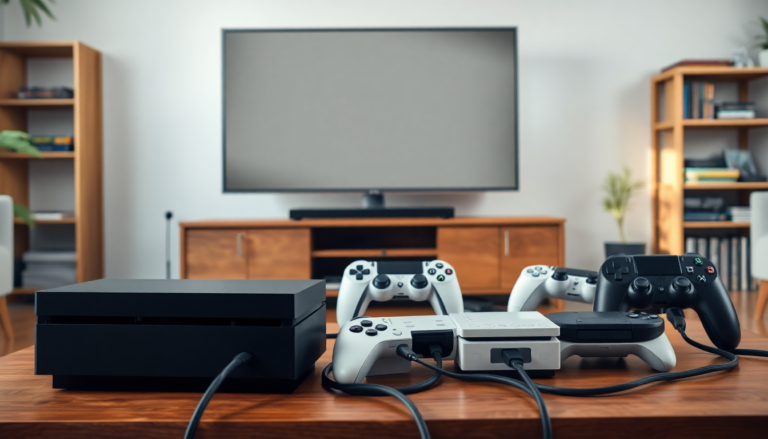Argomenti trattati
In today’s gaming world, the relationship between consoles and TVs can sometimes feel like a complicated puzzle. Ever tried connecting multiple gaming consoles to a single television only to face unexpected hiccups? If you’ve found yourself scratching your head when one console works perfectly while another doesn’t, you’re not alone. This article dives into common connectivity issues, particularly focusing on the dance between game consoles and TVs, and offers some practical solutions to make your gaming experience smoother.
Identifying the Problem
Many gamers have reported running into error messages when trying to hook up several consoles to one TV. This problem often stems from the TV’s struggle to juggle signals from more than one console simultaneously. Take, for instance, a recent case where a player encountered issues after placing two consoles too close to their TV. They soon discovered that only one console could connect at a time, leaving them to conclude that their TV could only handle a single source.
In this scenario, the player initially thought their Dream Cube console was on the fritz. However, the situation changed when they moved their second console, the Unorthobox, to another room. Suddenly, the Dream Cube functioned flawlessly. This highlights an essential point: understanding how TVs interact with multiple devices is crucial, and setting them up correctly can save a lot of headaches.
Understanding Game Updates and Functionality
As if connectivity issues weren’t enough, regular game updates can also complicate how consoles communicate with your TV. For example, a recent patch introduced new reward items and likely tweaked the compatibility settings across various consoles. Such updates can shift functionalities tied to specific game features, making it vital for players to stay informed about the latest patches, as they can directly affect gameplay and connectivity.
When navigating these ever-changing landscapes, remember that the first console plugged into the TV often takes priority. So, if you’re facing connectivity woes, it might be as simple as rearranging your setup. Try disconnecting the troublesome console, connect the other one first, and then plug the problematic console back in to see if it’s back to normal.
Practical Solutions and Recommendations
To steer clear of the confusion that comes with multiple gaming consoles, here are a few recommendations:
- One console at a time: Connect just one console to the TV initially, test its functionality, and then add additional consoles one by one.
- Use HDMI switches: If you frequently switch between consoles, consider investing in an HDMI switch. This handy device allows for seamless transitions without the hassle of physically disconnecting and reconnecting devices.
- Stay updated: Regularly check for software updates for both your consoles and TV. These updates can enhance compatibility and fix known issues.
In conclusion, recognizing your TV’s limitations when it comes to managing multiple gaming consoles can go a long way in preventing frustration. By taking a methodical approach to connectivity, gamers can enjoy a more seamless experience and unlock the full potential of their gaming setups.

